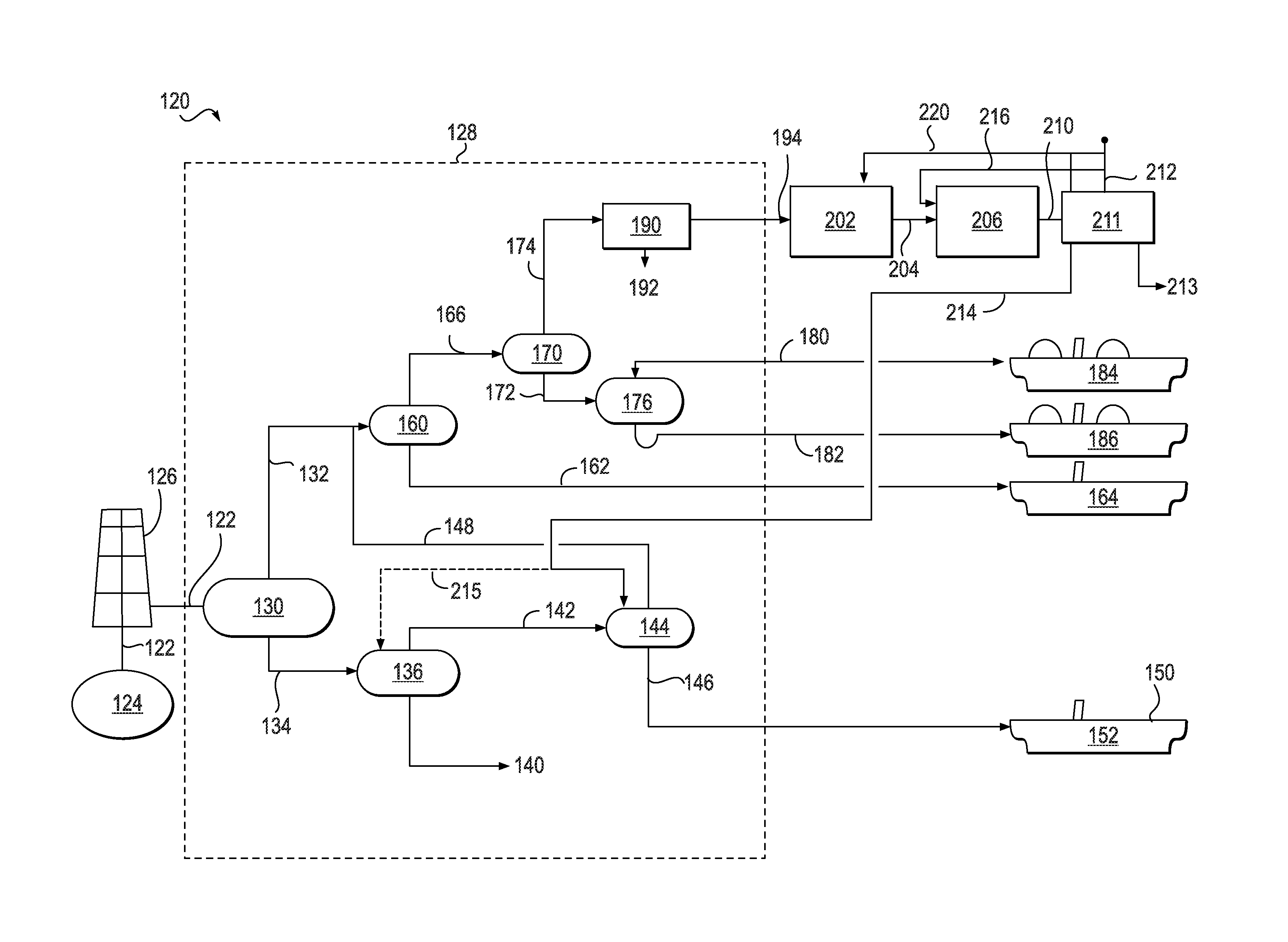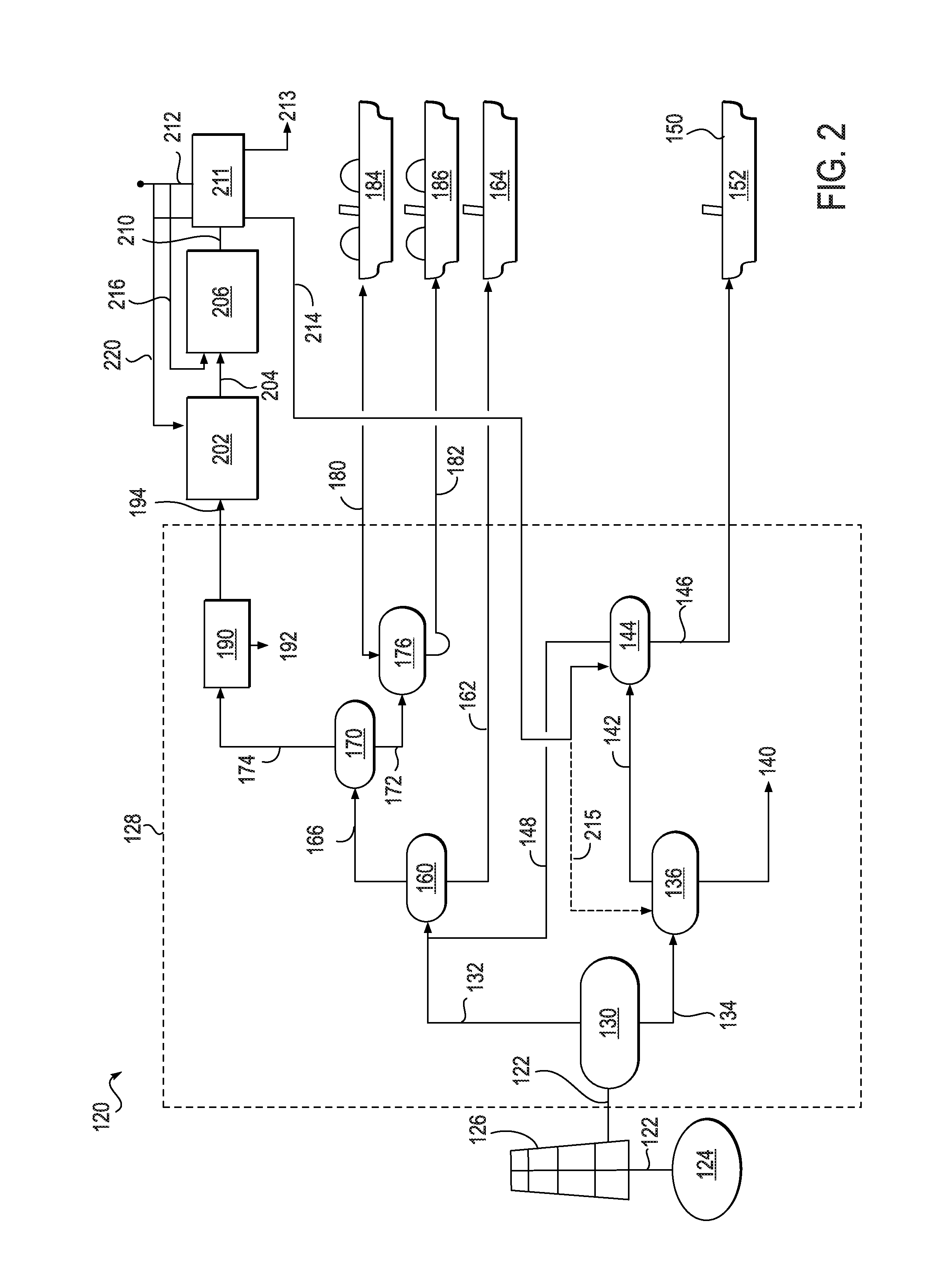Process and system for blending synthetic and natural crude oils derived from offshore produced fluids
a technology of synthetic crude oil and natural crude oil, which is applied in the direction of hydrocarbon oil cracking, refining to eliminate heteroatoms, borehole/well accessories, etc., can solve the problem that the amount of methane produced along with the crude oil is insufficient to justify conversion to liquefied natural gas, and the options to handle this methane (and ethane) are limited
- Summary
- Abstract
- Description
- Claims
- Application Information
AI Technical Summary
Problems solved by technology
Method used
Image
Examples
Embodiment Construction
[0025]A low-cost process has been discovered to convert associated gas into a low-impurity liquid product that can be sold as is or can be blended at an amount greater than 2 wt % with stabilized crude oil wherein the blended stabilized crude oil has a pour point at or below 60° C. This process utilizes the following elements:[0026](a) a separation complex which is used to separate the components in produced fluids into natural gas, liquefied petroleum gas (LPG) including propane and butane, and stabilized crude oil, and optionally condensate, water and sulfur compounds;[0027](b) a synthesis gas generator which converts the natural gas into synthesis gas; and[0028](c) a conversion reactor containing both a synthesis gas conversion catalyst and a hydroconversion catalyst which converts synthesis gas into a tail gas and a low-impurity effluent stream comprising propane, butane, and synthetic crude oil containing less than 5 wt % C21+ normal paraffins and water.
[0029]In one embodiment,...
PUM
 Login to View More
Login to View More Abstract
Description
Claims
Application Information
 Login to View More
Login to View More - R&D
- Intellectual Property
- Life Sciences
- Materials
- Tech Scout
- Unparalleled Data Quality
- Higher Quality Content
- 60% Fewer Hallucinations
Browse by: Latest US Patents, China's latest patents, Technical Efficacy Thesaurus, Application Domain, Technology Topic, Popular Technical Reports.
© 2025 PatSnap. All rights reserved.Legal|Privacy policy|Modern Slavery Act Transparency Statement|Sitemap|About US| Contact US: help@patsnap.com



